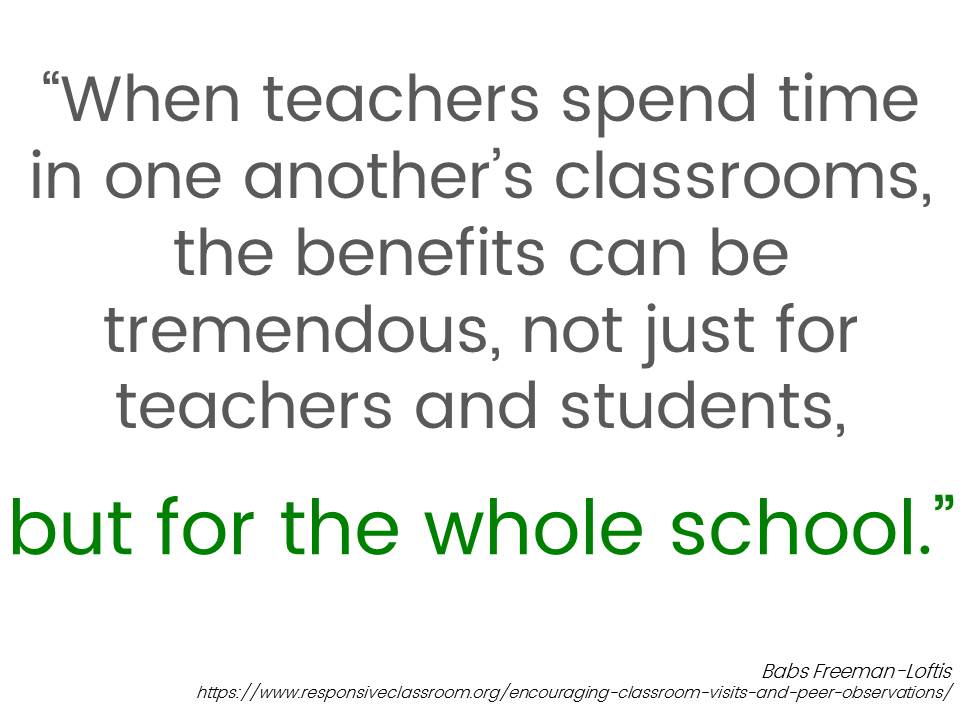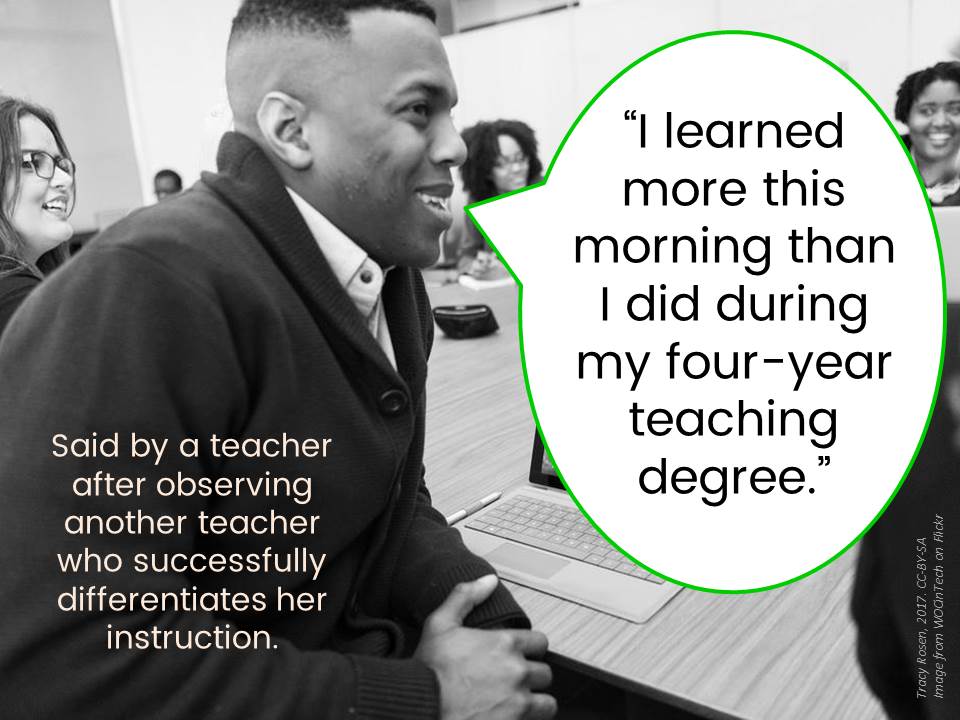Questions for Reflection:
Do the teachers in your school or centre visit each other’s classrooms?
What is stopping them?
What can we gain by visiting each other’s classrooms?
Why visit teacher classrooms?

Classroom visits offer real-time professional learning that brings theory about teaching into very practical terms. We can know our new programs inside and out but until we experience them in the classroom, we can not say that we really know how to teach them. By watching someone else teach something that is new to us, it can help in our own process as we transition to new ways of doing things.

What is a classroom visit?
Very simply, it is when a teacher or group of teachers spends time in another teacher’s classroom. This could happen within the same building or at a different school or centre. Usually, there is a specific reason for the visit and ideally there is some time after the visit to ask and answer questions about what was seen.
For example, a group of teachers and consultants recently visited Collen Glover’s math and science classroom at the Nova Career Centre, New Frontiers School Board. They set up the visit in order to get a better understanding of how she successfully manages her multi-level (Secondary 3 – 5) and multi-subject (Math, Chemistry, Physics, Physical Science) classroom. They specifically wanted to see how to teach such a diverse classroom in a competency-based approach in preparation for the transition to new programs of study in Adult Education in Quebec.
Video: Here is a video that resulted from that classroom visit.

Classroom visits are not only for the benefit of those who come to visit. Some teachers are starting to actively ask others to observe them in their classrooms as a way to improve their own practice. In order to facilitate this, they hang signs on their doors that look like this:
#ObserveMe in Adult Education: by Mariève Gagné, Access Centre, Riverside School Board.
And then they provide a link to an online form or paper copies of the questions for observers to provide their feedback. Teachers who are asking for this kind of feedback are sharing their stories on Twitter with #ObserveMe
This is a practice that encourages ongoing feedback in our professional learning and can be done by consultants or directors as well!
It is important to note that it takes time for classroom observations by our peers to become part of our practice. It is a huge risk for teachers – both those being observed and for those doing the observing! It may be an idea to structure the observations by encouraging teachers to pair up and observe each other.
Another idea is a sharing poster in the staff room, where teachers can put post-its sharing what they are doing in their classrooms and inviting others to come visit. They do this at Forest Hill Senior School in Saint Lazare, Quebec.
Picture from Transforming Classroom Spaces by Avi Spector.
What is not a classroom visit?
A classroom visit is not a formal evaluation. This is not a time for a director or principal to evaluate a teacher’s performance. It is really an opportunity for teachers to learn from each other.
Extra Resources
If you are interested in learning more about classroom visits or in organizing a classroom visit, please contact your local pedagogical consultant, Tracy Rosen or Avi Spector.
Learning resources for this tile were developed by Colleen Glover (Teacher, NFSB), Mariève Gagné (Teacher, RSB), Sonya Fiocco (DBE implementation consultant, PROCEDE), Sonia Boulais (Graphic Designer, CSSMI), Avi Spector (RECIT Consultant, RSB) and Tracy Rosen (RECIT Consultant, CSSMI), 2017.
All materials are expected to be reused and shared according to this Creative Commons license: CC BY-NC-SA 4.0
